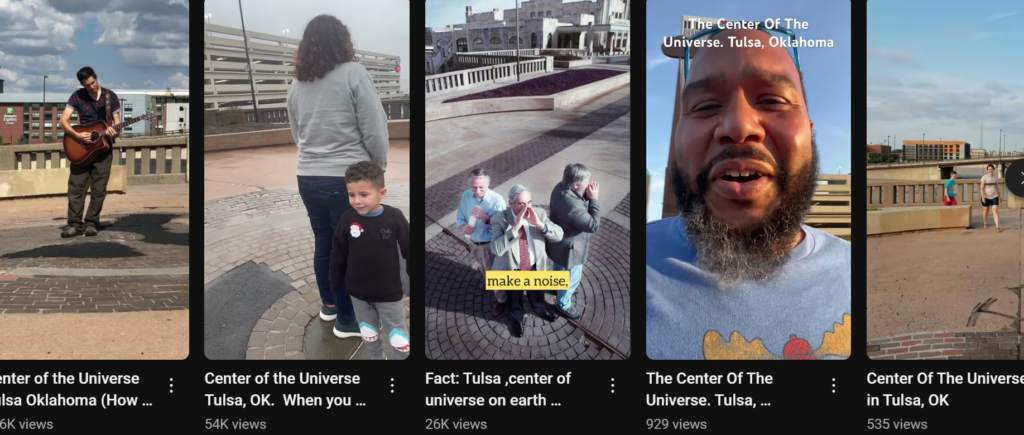Nestled in the heart of downtown Tulsa, Oklahoma, lies an unassuming yet captivating phenomenon known as the “Center of the Universe.” This unique acoustic anomaly has intrigued visitors and locals alike, offering an experience that defies conventional auditory expectations.

The Acoustic Enigma
The Center of the Universe is marked by a modest concrete circle, approximately 30 inches in diameter, set within a larger brick circle about eight feet across. When a person stands at its center and speaks, their voice is echoed back louder than it was made, creating a private amplified echo chamber. Strikingly, those standing outside the circle hear a distorted version of the sound or, in some accounts, nothing at all.
The exact cause of this phenomenon remains a topic of debate. Some theories suggest that the surrounding circular planters act as parabolic reflectors, redirecting sound waves back to the source. Others propose that specific architectural features of the site contribute to the effect. Despite various hypotheses, a definitive explanation has yet to be confirmed, adding to the site’s mystique.
Historical Context
The origins of the Center of the Universe date back to the early 1980s. The site is part of the Boston Avenue Pedestrian Bridge, which was reconstructed after a significant fire in the 1970s damaged the original structure. The bridge serves as a pedestrian walkway over the railroad tracks, connecting Tulsa’s downtown to the northern districts. Over time, this spot transformed into a gathering place, drawing attention not only for its practical use but also for its mysterious acoustic properties.
The “Artificial Cloud” Sculpture
Adjacent to the Center of the Universe stands the “Artificial Cloud,” a 72.5-foot-tall sculpture created by Native American artist Robert Haozous. Installed in 1991, this towering steel structure features cut-out designs, including human figures and airplanes, symbolizing the intersection of nature and technology. The sculpture’s intentional rusting over time reflects Haozous’ commentary on environmental degradation and the ephemeral nature of human constructs.
A Hub of Cultural Significance
Beyond its acoustic curiosity, the Center of the Universe has evolved into a cultural landmark. It serves as a venue for various events, from concerts to art installations, and has become a popular spot for visitors seeking a unique experience. Its proximity to other Tulsa attractions, such as the Oklahoma Jazz Hall of Fame and the Woody Guthrie Center, makes it an integral part of the city’s vibrant cultural tapestry.
Visiting the Center of the Universe
For those wishing to experience this auditory oddity firsthand, the Center of the Universe is accessible via a brick path leading to the Boston Avenue Pedestrian Bridge, located at 20 E Archer St. The site is open 24 hours a day, allowing visitors to explore at their leisure.
Preservation and Future Plans
Recognizing its significance, efforts have been initiated to preserve and enhance the Center of the Universe and its surroundings. The Downtown Tulsa Partnership, in collaboration with the City of Tulsa, has embarked on a project to renovate the plaza and bridge. Plans include structural repairs, improved pathways, updated lighting, landscaping, and the incorporation of new public art installations. These enhancements aim to ensure that the site continues to be a cherished destination for future generations.
Conclusion
The Center of the Universe stands as a testament to Tulsa’s blend of mystery, art, and community spirit. Whether you’re a curious traveler, a local historian, or someone seeking a unique experience, this acoustic anomaly offers a glimpse into the unexpected wonders that urban landscapes can harbor.
